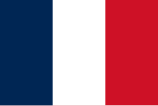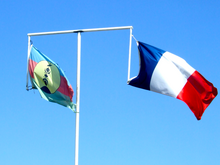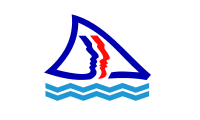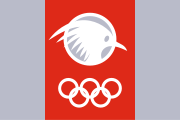
New Caledonia is a sui generis collectivity of overseas France in the southwest Pacific Ocean, south of Vanuatu, about 1,210 km (750 mi) east of Australia, and 17,000 km (11,000 mi) from Metropolitan France. The archipelago, part of the Melanesia subregion, includes the main island of Grande Terre, the Loyalty Islands, the Chesterfield Islands, the Belep archipelago, the Isle of Pines, and a few remote islets. The Chesterfield Islands are in the Coral Sea. French people, especially locals, call Grande Terre le Caillou, a nickname also used more generally for the entire New Caledonia. Pro-independence Kanak parties use the name (la) Kanaky to refer to New Caledonia, a term coined in the 1980s from the ethnic name of the indigenous Melanesian Kanak people who make up 41% of New Caledonia's population. New Caledonia is one of the European Union's Overseas Countries and Territories (OCTs), but it is not part of the European Union.

Nouméa is the capital and largest city of the French special collectivity of New Caledonia and is also the largest francophone city in Oceania. It is situated on a peninsula in the south of New Caledonia's main island, Grande Terre, and is home to the majority of the island's European, Polynesian, Indonesian, and Vietnamese populations, as well as many Melanesians, Ni-Vanuatu and Kanaks who work in one of the South Pacific's most industrialised cities. The city lies on a protected deepwater harbour that serves as the chief port for New Caledonia.
The Nouméa Accord of 1998 is a promise by the French Republic to grant increased political power to New Caledonia and its indigenous population, the Kanaks, over a twenty-year transition period. It was signed 5 May 1998 by Lionel Jospin, and approved in a referendum in New Caledonia on 8 November, with 72% voting in favour. Under the accord, three more referendum votes, on whether to remain a special collectivity of France or become an independent state, have been held. One was held in 2018, and the second was held in 2020. In both votes a majority chose to remain French. The Nouméa Accord permitted a final referendum to be held, voted for by the Congress of New Caledonia. It was held December 2021 and widely rejected independence amid boycott by the independence movement.
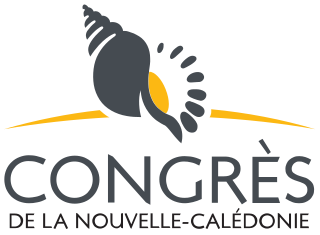
The Congress of New Caledonia, a "territorial congress", is the legislature of New Caledonia. The congress is headquartered at 1 Boulevard Vauban in downtown Noumea. Local media in New Caledonia refer to the congress as "boulevard Vauban" when referencing it.

The National Union for Independence is a militant socialist pro-independence alliance of political parties in New Caledonia. It is a component of the Kanak Socialist National Liberation Front (FLNKS) along with the Caledonian Union.
The Matignon Agreements were agreements signed in the Hôtel Matignon by Jean-Marie Tjibaou and Jacques Lafleur on 26 June 1988 between loyalists who wanted to keep New Caledonia as a part of the French Republic, and separatists, who did not. The agreements were arranged under the aegis of the Government of France as a result of discussions and compromises arranged by Christian Blanc, the negotiator for Michel Rocard's government.

A flèche faîtière is a carved rooftop spear, spire or finial that adorns Kanak houses, particularly the Great Houses of the Kanak Chiefs, in New Caledonia. The ceremonial carving is the home of ancestral spirits and is characterized by three major components. The ancestor is symbolized by a flat, crowned face in the centre of the spear. The ancestor's voice is symbolized by a long, rounded pole that is run through by conch shells. The symbolic connection of the clan, through the chief, is a base, which is planted into the case's central pole. Sharply pointed wood pieces fan out from either end of the central area, symbolically preventing bad spirits from being able to reach the ancestor. It evokes, beyond a particular ancestor, the community of ancestors. The flèche faîtière was depicted on a 2007 New Caledonian stamp.
Numèè, or Kwényi (Kwenyii), is a New Caledonian language, the one spoken at the southern tip of the island, as well as on the Isle of Pines offshore. Despite its name, it is probably not the language that gave its name to the capital of New Caledonia, Nouméa; that seems to have been its close relative Ndrumbea, which used to be spoken there.
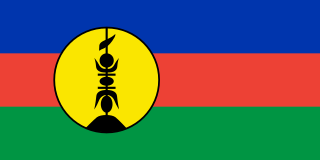
The Kanaks are the indigenous Melanesian inhabitants of New Caledonia, an overseas collectivity of France in the southwest Pacific. Kanak peoples traditionally speak diverse Austronesian languages that belong to the New Caledonian branch of Oceanic. According to the 2019 census, the Kanaks make up 41.2% of New Caledonia's total population — corresponding to around 112,000 people. The Kanak population is traditionally contrasted with two groups of European descent: (1) the Caldoche, who were born in New Caledonia; and (2) the Zoreille, who were born in metropolitan France and live in New Caledonia.

An independence referendum was held in New Caledonia on 4 November 2018. Voters were given the choice of remaining part of France or becoming an independent country.
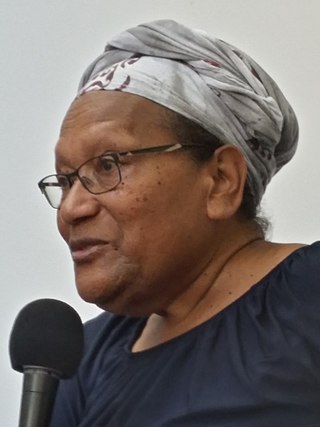
Déwé Gorodey was a New Caledonian teacher, writer, feminist and politician. She was active in agitating for independence from France in the 1970s. She published poetry, short stories and novels. From 1999, she was a member of the New Caledonian government, representing the pro-independence Kanak and Socialist National Liberation Front. From April 2001 to June 2009, she served almost continuously as Vice President of the Government of New Caledonia.

An independence referendum was held in New Caledonia on 4 October 2020. The poll was the second to be held under the terms of the Nouméa Accord, following a similar referendum in 2018.

Sonia Backès is a French politician in New Caledonia. She is the current leader of the Caledonian Republicans party and the President of the Provincial Assembly of South Province since 17 May 2019.
The COVID-19 pandemic was confirmed to have reached the French overseas collectivity of New Caledonia on 18 March 2020. All cases are on the main island of Grand Terre and are related to travel abroad. On 7 May, all cases had recovered.
An independence referendum was held in New Caledonia, a French territory in the South Pacific, on 12 December 2021. The vote was the third and final one to be held under the terms of the Nouméa Accord, following votes in 2018 and 2020.
Ilaïsaane Lauouvéa is a New Caledonian politician, who from 2009 to 2014 was an elected member of the Congress of New Caledonia representing the Kanak and Socialist National Liberation Front.
Didier Poidyaliwane was a New Caledonian politician. A pro-independence activist, he was a member of the Caledonian Union (UC) and the Kanak and Socialist National Liberation Front (FLNKS) and strongly defended the rights of indigenous Kanak people. He served in the cabinet of Philippe Germain and Thierry Santa as a minister in the Government of New Caledonia.
Caroline Machoro-Reignier is a Kanak politician in New Caledonia. A member of the pro-independence Caledonian Union, she led the Kanak and Socialist National Liberation Front alliance in the Congress of New Caledonia from 2011 to 2014. In 1988, she was one of the signatories of the Matignon Agreements between New Caledonian loyalists and separatists.
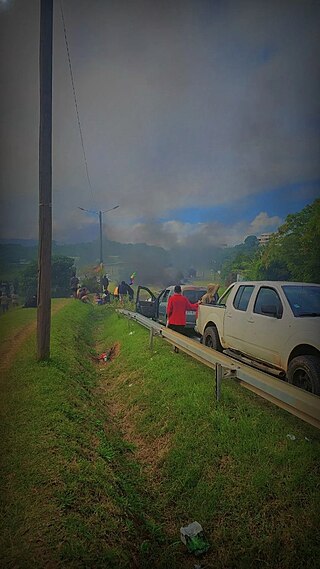
In May 2024, protests and riots broke out in New Caledonia, a sui generis collectivity of overseas France in the Pacific Ocean. The violent protests have led to seven deaths, the declaration of a state of emergency on 16 May, deployment of the French army and the block of the social network TikTok. As of 30 May 2024, there have been 79 direct and indirect deaths in total.

